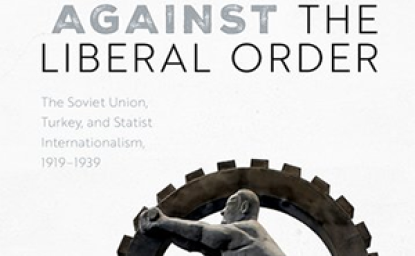East German Spying Reveals NATO War Plans

CWIHP e-Dossier No. 9
Stasi spies in NATO obtained actual war plans of the alliance, yet East German and Soviet leaders saw these essentially defensive plans as a cover for a forthcoming first strike—a fear that peaked in the "war scare" of 1983—according to new documents from the Stasi archives obtained by the Parallel History Project on NATO and the Warsaw Pact (PHP), one of the partners in the CWIHP network.
Excerpts from three of the most significant documents are published below in English translation. Facsimiles of the original documents can be viewed at http://www.php.isn.ethz.ch/.
The documents are published on the 20th anniversary of NATO's "Able Archer" exercise that may have been the closest moment to nuclear war since the 1962 Cuban missile crisis because of Soviet suspicions that the exercise was a cover for a surprise US nuclear attack. Soviet intelligence desperately tried to discover further details and Soviet forces went on alert. Obtained by the Project from the archives of former East Germany's security agency (Stasi) in accordance with Germany's 1992 declassification rules, the collection consists of reports about the findings of Stasi spies compiled by the agency for the information of top East German and ultimately Soviet leaders.
The reports were edited by Bernd Schäfer, a CWIHP Senior Scholar, PHP associate and research fellow at the German Historical Institute in Washington, as the most representative and interesting from the files that the Stasi intelligence arm had saved in 1990 as a kind of "trophy case" when the agency destroyed most of its other files. They include reports about the military posture and potential of NATO and its members states—the United States, United Kingdom, West Germany, France, Denmark, Norway, Italy, Spain, and Greece.
The documents show that most of NATO's closely guarded secrets were an open book for the communist spies. The Soviet Union was thus able to learn of its adversary's plans in the event of a war in Europe, including the 1981 war plan of the United States 5th Army Corps, reproduced on the website in a German translation. The spies also snatched detailed technical information about the West's latest military technology, such as the Pershing-2 intermediate-range missile.
The most important conclusions from the documents edited by Schäfer are:
- The Western armament policies since the late Carter administration and especially during the Reagan administration genuinely surprised and puzzled Soviet leaders, leading them to believe the United States aimed at blackmailing them or else defeating the Soviet Union in a nuclear war—a mirror image of how American conservatives tended to view Soviet intentions;
- Thanks to the reporting by East German agents, the Soviet Union and its Warsaw Pact allies were aware that NATO's strategy was defensive yet acted, even among themselves, on the assumption that it served as a cover-up for a possible surprise nuclear strike, thus justifying their own offensive strategy on ideological rather than practical grounds;
- NATO's November 1983 "Able Archer" exercise brought to a climax Soviet suspicions that such a strike might be imminent, though not to the extent of prompting the Kremlin to prepare a pre-emptive strike that might escalate into an all-out war, thus indicating that no conclusive intelligence of a change in NATO's strategy was forthcoming;
The unintended transparency of NATO's military posture, while not enough to reassure the Soviet adversary about its intentions, nevertheless had the beneficial effect of generating respect for the alliance's growing conventional capability, as well as organizational prowess, which ultimately impressed upon Soviet leaders the realization that they could not win in a technological competition with the West.
THE DOCUMENTS:
Document No. 1: Iraq's WMD capacity as of October 1989 from Stasi Perspective;
East German Ministry of State Security, "Nuclear, Chemical, and Ballistic Missile Potential of Selected Threshold Countries"
Document No. 2: The Stasi's own preface to the V Corps/U.S. Army 1981 war plan (which recognizes that NATO's concept was defensive in nature in contrast to Warsaw Pact plans, which until 1987 indeed envisioned the mentioned "breakthrough towards the Rhine");
"U.S. and NATO Military Planning on Mission of V Corps/U.S. Army During Crises and in Wartime"
Document No. 3: The Stasi preface on NATO intelligence assessment (demonstrating how much both sides knew about each other):
East German Ministry of State Security, "Assessment of Adversary's Intelligence on Development of Warsaw Pact Forces, 1983-1985"
For the facsimiles of the original documents, along with scholarly introductions, visit the PHP website. The website is part of the International Relations and Security Network (ISN), operated by the Swiss Center for Security Studies ETH Zurich as a major Swiss contribution to NATO's Partnership for Peace.
The Parallel History Project on NATO and the Warsaw Pact.
Author

Professional Lecturer, The George Washington University

Cold War International History Project
The Cold War International History Project supports the full and prompt release of historical materials by governments on all sides of the Cold War. Read more




